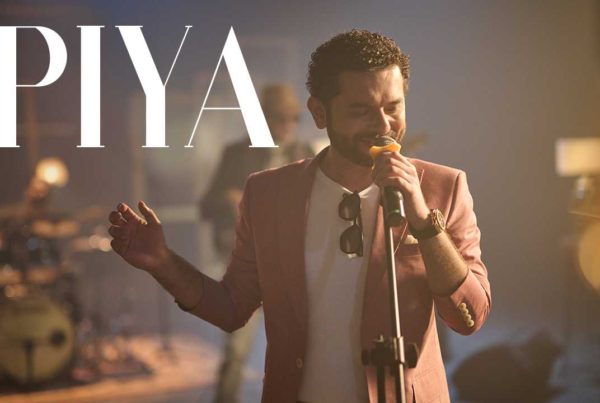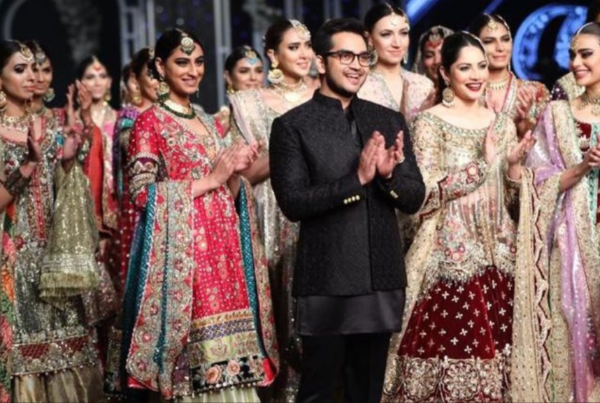
Sana Safinaz, photographed with their children, for the very first time. (L-R) Zuvair, Sana, Reza, Safinaz and Sascha. The task was to get Obi to stay still and let go of the rock that he refused to let anyone take out of his mouth, Only Bilal, Safinaz’s husband (who shied away from being photographed) could control him. But then Obi was an overgrown pussycat not a dog!

Bilal, just in from a game of golf, trying to convince Obi to let go of the rock. It was an extremely exhausting but fun day for everyone!
(Published in the very premiere issue of Hello! Pakistan, April 2012)
 To imagine that two women could dominate an ostensibly male dominated industry in an even more patriarchal society would seem preposterous for Pakistan. But that’s exactly what designers Sana Hashwani and Safinaz Muneer have managed to do for more than two decades. Celebrated as Pakistan’s biggest success stories in a burgeoning fashion stratosphere, this design duo has built an empire on their vast clothing business, home furnishing, fabric and lifestyle in general.
“It helps that we are from society,†Sana hates to admit. But it goes without saying that Pakistani women, despite their apparent conservatism, have vied for a piece of the luxury, sophistication and society that Sana and Safinaz have managed to package as their brand.
We meet at Safinaz’s palatial property off the coastal line of the Arabian Sea in Karachi. Since the two are related by marriage (Safinaz is married to Sana’s brother Bilal), there is a casual camaraderie between their children Zuvair, 18, Sascha, 15 and Reza, 12.

Rizwan ul Haq was kind enough to squeeze this shoot into his mad lawn schedule but SS refused to shoot with anyone else and we know why!
“This is the first time, I’ve let professional photographers into my home,†smiles Safinaz who enjoys the privacy of a well-guarded lifestyle in a very public life. Sana and Safinaz may be household names in Pakistan and enjoy a versatile clientele in India and the Middle East where they retail but they do not live in the spotlight. They shy away from it.
“This is undoubtedly the worst part of the business,†Safinaz exclaims in discomfort during the shoot. “I’d be happy if I never had to do another camera shot in my life.â€
Designers who find the camera tiresome manage to effortlessly juggle five in-house labels: bridals (their most high-end brand of couture), eveningwear, prêt a porter, furniture and the most recent phenomena – lawn. Lawn, a local version of the light and summery fabric voile, is being touted as Pakistan’s prêt a porter and was made fashionable by Sana Safinaz several years ago.
Right after this shoot they are flying out to Faisalabad where a textile tycoon’s home needs to be furnished and then they will proceed to tour the country to exhibit their limited edition fabric.
From Karachi’s posh coastal feel to Faisalabad’s cultural ethos and from high priced couture to affordable unstitched fabric, it’s commendable how Sana and Safinaz have managed to appeal to everyone across the country.
What attracts masses of women to a brand that is apparently elitist in its ethos?
Sana: We work very hard. Society is just one of six things that define us. For the first ten years we didn’t do the coffees, the lunches and dinners or the fraternity events. We didn’t want to be the face of Sana Safinaz. No one knew us. It helps who you are married to and what your background is – and I say this as humbly as possible – but there’s a tremendous amount of work done too. The brand Sana Safinaz is a body of hard work done over 20 years and there is nothing elitist about that. Our brand is widely accessible today even if we are not. And we believe in divine intervention. Success is not possible without it.
Safinaz: Ours is an ‘aspirational’ brand. You see a lifestyle that you aspire to have. The clothes are a glamorous fusion of east and west.
How would you define ‘fusion’ that is your forte?
Safinaz: For us fusion is a mix of eastern and western aesthetics. But we keep in mind our local client. We are designing for the Asian woman, not the western. Nobody has gotten fusion right yet. We have reinvented desi. We have access to western fashion and are inspired by it. In turn women are tapping into fashion that they don’t have access to.
Sana: Our market is the South-Asian woman, no matter where she is in the world. Asians have managed to accumulate pockets of extreme wealth all over the world and our clientele is there, not in the western market.

Safinaz in Cavalli; seated in her study that overlooks the serene pool. Safinaz shops for the home more than the wardrobe and her love for antiques is apparent in the way it is accessorized.
What about your own wardrobes? What would we find if we raided…
Sana: You’d find a lot of Lanvin and Cavalli in mine. It’s getting increasingly difficult to show leg in Pakistan! You’ll also find several eclectic brands like Rouland Mouret and of course Louboutins. It’s almost always Louboutins (she does also pull out a pair of gold, sky-scraping Tom Ford sandals during the shoot). I buy jewellery when my husband (Arif Hashwani) is feeling benevolent and kind.
Safinaz: You’d find a lot of high end as well as high street brands in mine. A lot of Zara and of course, a lot of Sana Safinaz! I hate to be branded from head to toe and prefer mixing things up.
Why do you think the world is so interested in Pakistani fashion at this point in time?
Sana: Are they really interested? I don’t think so. The west has always loved contrasts and what they love right now is the contrast between the conservative Pakistan they are used to seeing in the newspapers and the liberal side that is opening up because of fashion. Once that initial interest dies out I don’t think they’ll remain very interested. They may be interested as long as we are different. The world isn’t interested in another Gucci, Valentino or Armani. They already have enough of those. They want to see what we can offer.
Safinaz: Who’s interested? I think it’s the dichotomy of Pakistan that excites them. Pakistan is portrayed as this very radical, Islamic country and at the same time great fashion comes out of Pakistan. Pakistani women are very fashionable. Fashion weeks have really helped promote Pakistan. But the west is always impressed by ‘black and white’ and that attracts them to Pakistan. Once the excitement wears out they won’t be so interested. It’s more trumped up than actual interest.
What do you think Pakistani fashion has to its advantage?
Safinaz:Undoubtedly the craftsmanship. Our craft is beautiful and it’s substantially

Neha, the official Sana Safinaz muse, poses in the popular Ikat tunic that has set off a new, shorter trend for hemlines.
different from India or any other part of the world. We still have craftsmen and people who sit for hours and hours and put in more than 1500 hours in a dress that will cost you nothing. The labour is so talented and yet at the same time so cheap. The beauty is that it’s all done by hand. In the west – and I was watching the Valentino movie when I noticed this – it is such a big deal if beading or embroidery is done by hand. Well, all our clothes are done by hand. In the bridal market all our work is couture.â€
Sana: We wanted to focus on our Eastern craftsmanship when designing (Pakistan’s first Oscar nominee) Sharmeen Obaid Chinoy’s outfit. It’s quintessential Sana Safinaz fusion, embellished from head to toe but streamlined and contemporary enough not to look like a costume. She’ll be wearing it to the dinner after the Oscars.
What sets us apart from India?
Safinaz: I think our aesthetics are very refined. India is very inspired by Bollywood (the Hindi film industry). We are not Bollywood at all. The west loves the kitsch from India, not the sophistication. They are looking for costume.
Sana: You’ll see that now some Indian designers are transcending beyond Bollywood because their society women have evolved. The designers are now gradually catering to them more than to the Bollywood clan. We have been very well received in both Delhi and Bombay.
You’ve always been inspired by western fashion and you travel a lot to take it in. What would be your favourite holiday destination for inspiration?
Sana: I travel a lot but rarely go on holidays. I always end up going to London and Dubai. I’m a workaholic and a shopaholic. In fact I confess that I make clothes to buy clothes. I like traveling to the south of France, St Tropez but I love to ski and my favourite holiday is always a ski holiday. My husband isn’t very adventurous but I’ve found a travel partner in my daughter. Safi and Bilal are the adventurous ones.
Safinaz: I love Paris and find it very inspirational. The opulence of architecture is all so fascinating. But I’m also in love with the Far East, mainly because of its graciousness. I’m not as much of a shopaholic as Sana is and I prefer shopping for the home rather than for clothes. I keep picking up chandeliers, antique Chinese cupboards etc.
What helped you cross the great divide between society and the masses in Pakistan?
Safinaz: Lawn was the real puller for us. It gave women a taste of the Sana Safinaz lifestyle. It was also an eye opener for us. Though we had been doing bridals for twenty years women didn’t know us for that. Nothing compared to the overwhelming success of Sana Safinaz lawn.â€
How is Sana Safinaz lawn different from the other 108 varieties available every summer?
Safinaz: We’re designing lawn, not just making prints. We design the whole theme behind all collections. We’re working from scratch and designing complete outfits. It’s a very subtle difference and people have not picked up on that.
Has lawn become an integral part of Pakistani fashion?
Sana: Lawn has changed the market for fashion in Pakistan. Venture capital is happening because of lawn and investors who have never invested in fashion brands are coming in and making huge investments for lawn. Fashion is where money is to be made today and corporations are investing into it.
How do you see your brand evolving in the future?
Sana: The brand Sana Safinaz must continue even when we’re dead and gone. We are building systems hoping that it will sustain even if it does morph.
Do you plan on involving your children in the business?
Sana: It’s open. Zuvair will get into it if she wants to and if she can. The children won’t be heading Sana Safinaz just because they’re our children. So many of our friends and family work with us already. We are putting in systems that will make sure the brand lives on.

Sana and Safinaz in SS. They truly are aspirational: now who wouldn’t want to be in their Louboutins for a day?
Photographs: Rizwan ul Haq
Safinaz’s hair and makeup: Creative Team at Nabila
Sana’s hair and makeup: Bina Khan








Touche. Solid arguments. Keep up the great work.